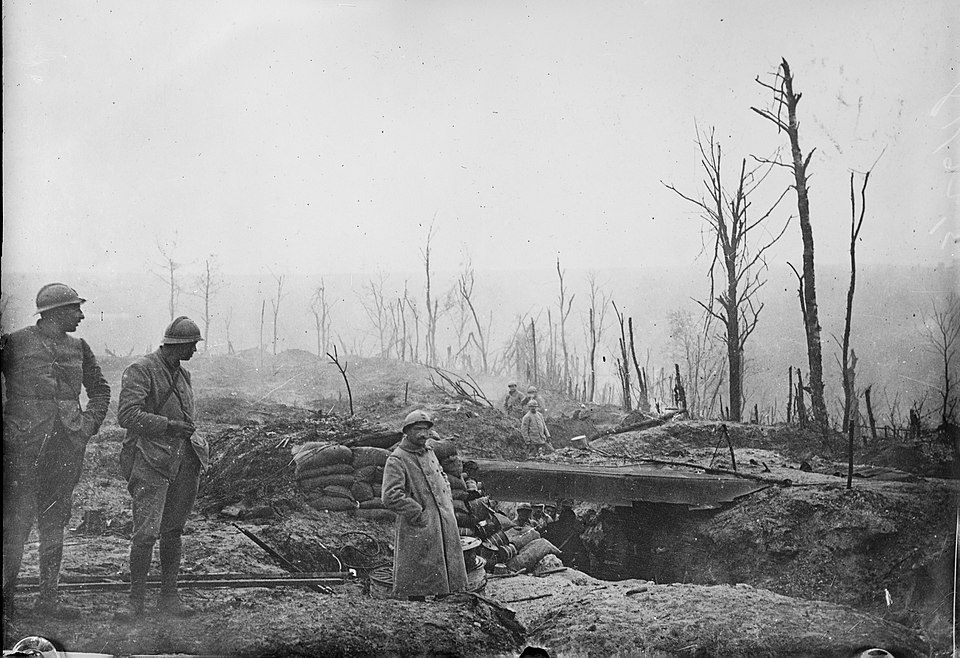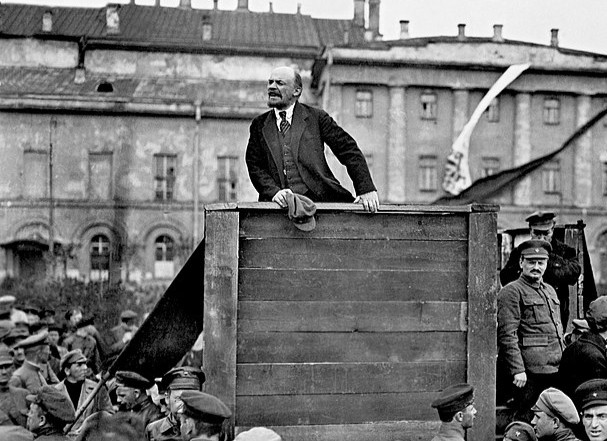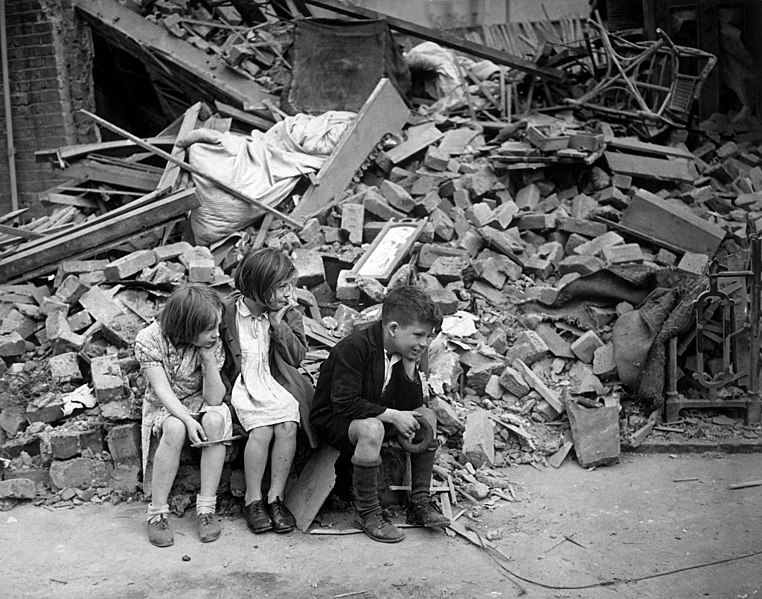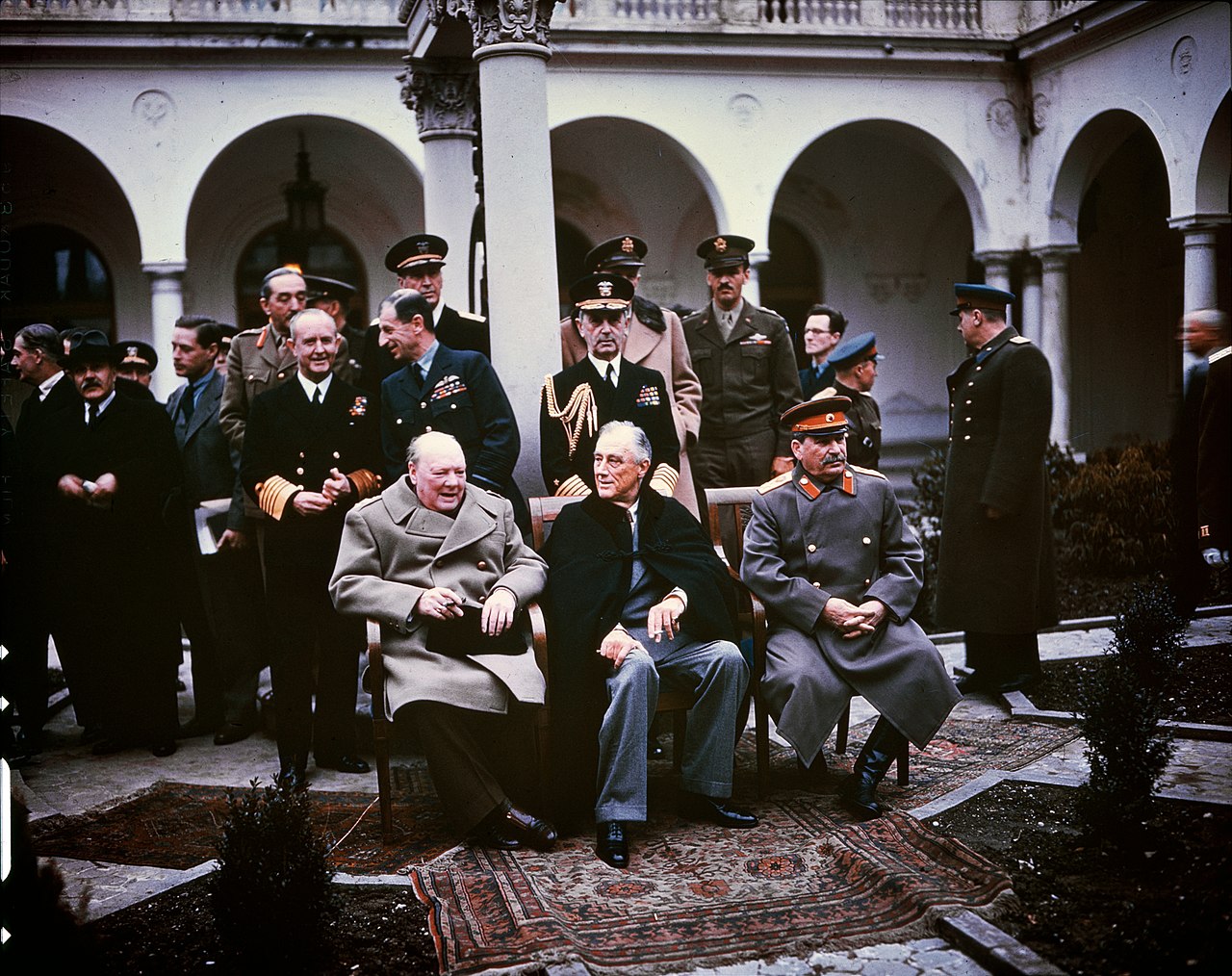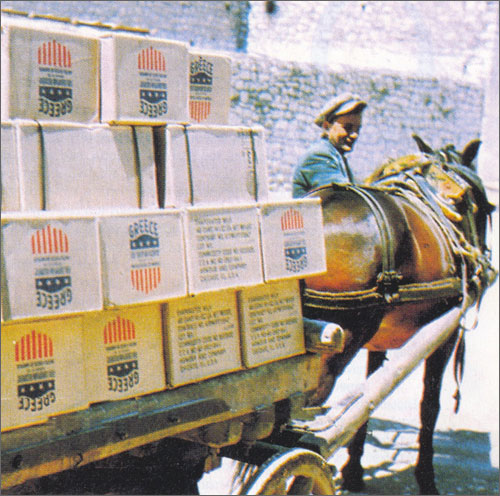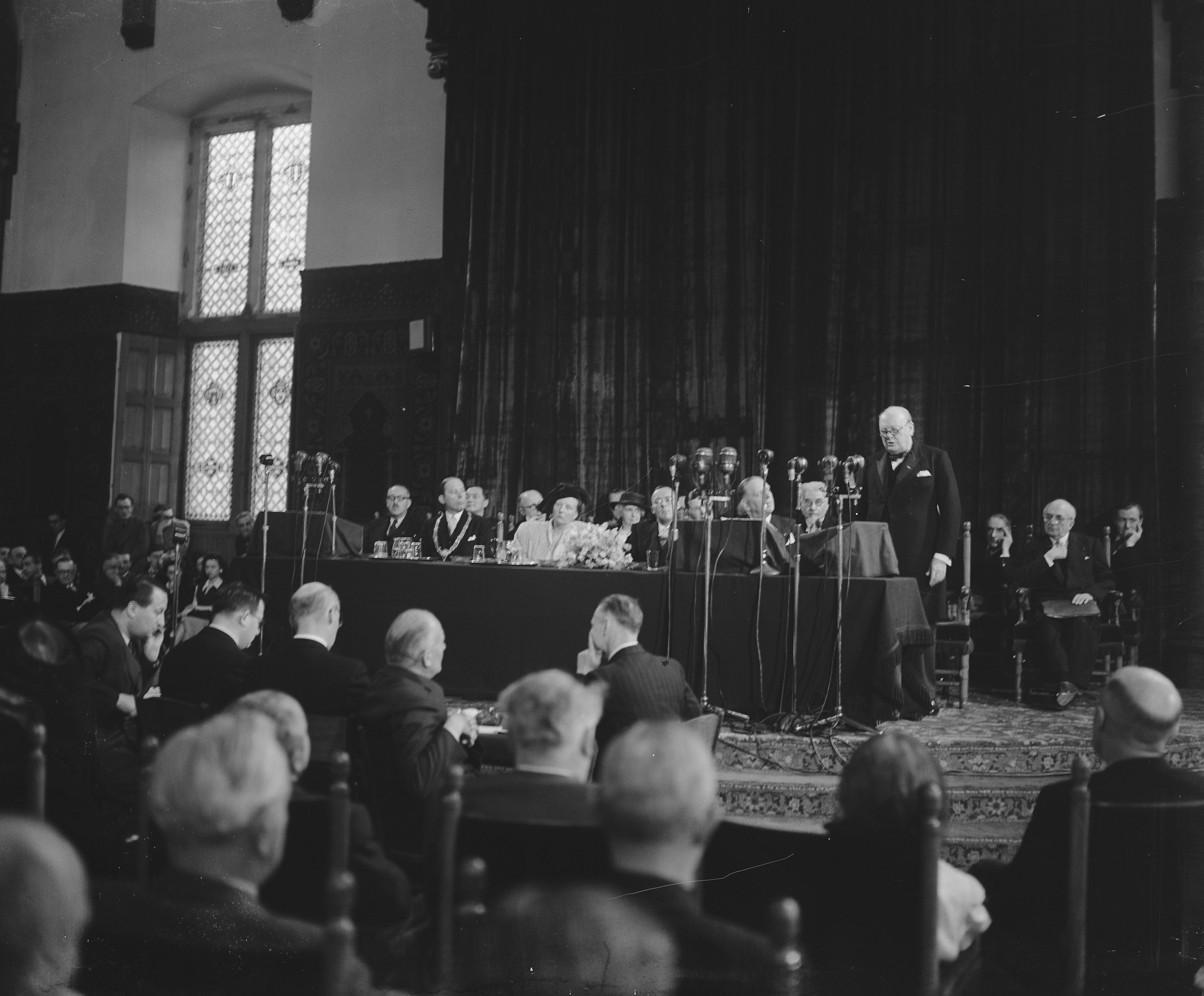The two leaders who coined the term ‘the Second Thirty Years’ War’ in the 1940s were Winston Churchill and Charles de Gaulle. The term had autobiographical as well as historical resonance. In their own eyes, both men had won both world wars. They stood for the armies and nations victorious in 1918 and 1945. While neither had achieved victory alone, both were towering symbols of national pride and defiance. They had brought Germany to its knees not once but twice.
Neither man ever suffered from a paucity of self-esteem. As early as 1906, Churchill said in a letter to Violet Bonham Carter, daughter of British Prime Minister Herbert Asquith, that he recognized that we humans are frail creatures. ‘We are all worms’, he affirmed, ‘but I do believe that I am a glow worm.’ Charles de Gaulle was more austere than Churchill, but he was charged with the same sense of destiny as Churchill felt in having led his country from defeat to victory in the Second World War.
There is justice in their pride in victory. Both commanding and imperious figures, they were a caricaturist’s dream – the rotund man with the cigar no less than the tall general with a prominent nose projecting from his kepi. Both stood alone in the Second World War. Churchill mobilized the English language when a German invasion of England and British defeat looked inevitable in May and June 1940. De Gaulle mobilized French pride, the French language and France’s imperial resources when there was nothing else left to bolster hope in the future.
Both fought an imperial war to restore the grandeur of their nations. And yet destroying the imperial dreams of Germany in the Great War and of Germany, Italy and Japan in the Second World War was so costly as to constitute a double Pyrrhic victory for both France and Britain. Both Churchill and de Gaulle came to know, slowly but surely, that the price of victory in Europe was the liquidation of their beloved empires themselves.
Recognition of that tragic reality took time. In the mid-1940s, when de Gaulle and Churchill coined the term ‘the Second Thirty Years’ War’, they were still measuring and basking in the glow of victory. Defeating Germany in 1914–18 and 1939–45 gave Britain and France a commanding position in northwestern Europe and on the global stage. And yet that moment of mastery was evanescent, since it would last only as long as the United States paid for it. The Marshall Plan restored European economic stability and helped fuel les trentes glorieuses, the massive surge of growth and development that provided the West with the economic strength needed to deflect and then to defeat Soviet power. The reason Europe reconstructed itself as a loose federation of states was that it was no longer able to use their empires as an arsenal and a refuge. American power dwarfed European power in the aftermath of the two world wars.
That is why the story of a second Thirty Years’ War was so comforting to them and their supporters. In effect Churchill and de Gaulle projected their own lives and political careers onto the history of their nations and their empires. And while there was more than an element of truth in their doing so, there was also an even greater element of distortion, one that has made it difficult for contemporaries and historians to distinguish between global conflicts that took on entirely different forms and had entirely different consequences.
The argument of this essay is that the differences between the two world wars overwhelmingly outweigh their similarities. What Pierre Bourdieu, a French sociologist, called the biographical illusion – that we see our lives as one continuous narrative that we can narrate ourselves – becomes even more of a distorting mirror when it enters into the self-fashioning of autobiography.1 For de Gaulle and Churchill, as much as for the societies they led, there never was a seamless web binding together the history of the two world wars into one thirty-year conflict.
The claim
Let us consider three classic statements of the notion that there was in the 20th century a second Thirty Years’ War. On his return from Yalta in January 1945, Winston Churchill told the House of Commons:
I have lived through the whole story since 1911 when I was sent to the Admiralty to prepare the Fleet for an impending German war. In its main essentials it seems to me to be one story of a 30 years’ war, or more than a 30 years’ war, in which British, Russians, Americans and French have struggled to their utmost to resist German aggression at a cost most grievous to all of them, but to none more frightful than to the Russian people, whose country has twice been ravaged over vast areas and whose blood has been poured out in tens of millions of lives in a common cause now reaching final accomplishment. There is a second reason which appeals to me apart from this sense of continuity which I personally feel. But for the prodigious exertions and sacrifices of Russia, Poland was doomed to utter destruction at the hands of the Germans. Not only Poland as a State and as a nation, but the Poles as a race were doomed by Hitler to be destroyed or reduced to a servile station. Three and a half million Polish Jews are said to have been actually slaughtered. It is certain that enormous numbers have perished in one of the most horrifying acts of cruelty, probably the most horrifying act of cruelty, which has ever darkened the passage of man on the earth. When the Germans had clearly avowed their intention of making the Poles a subject and lower grade race under the Herrenvolk, suddenly, by a superb effort of military force and skill, the Russian Armies, in little more than three weeks, since in fact we spoke on these matters here, have advanced from the Vistula to the Oder, driving the Germans in ruin before them and freeing the whole of Poland from the awful cruelty and oppression under which the Poles were writhing.2
Three years later, after having won the war and lost the election to remain Prime Minister of Britain in 1945, Churchill used the term the ‘Thiry Years’ War’ in a more peaceable setting. For a brief period he was one of the strongest advocates of a united Europe, to serve as a bulwark against the communist menace in the east of Europe. At the Congress of Europe convened in Brussels in 1948, 100 years after the ‘springtime of peoples’ of 1848, he told the assembled delegates:
I have the feeling that after the second Thirty Years' War, for that is what it is, through which we have just passed, mankind needs and seeks a period of rest. After all, how little it is that the millions of homes in Europe represented here today are asking. What is it that all these wage-earners, skilled artisans, soldiers and tillers of the soil require, deserve, and may be led to demand? Is it not a fair chance to make a home, to reap the fruits of their toil, to cherish their wives, to bring up their children in a decent manner and to dwell in peace and safety, without fear or bullying or monstrous burdens or exploitations, however this may be imposed upon them? That is their heart's desire. That is what we mean to win for them.3
Here is the germ of the idea that the second Thirty Years’ War was the beginning of what Eric Hobsbawm termed the ‘short twentieth century’.4 The two world wars, he claimed, seamlessly led to the Cold War, which came to an end in 1989, 30 years after Churchill’s death.
Charles de Gaulle shared Churchill’s fondness for the resonance of the term the second Thirty Years’ War. On 28 July 1946 at Bar le Duc, not far from Verdun, where he was taken as a prisoner of war in 1916, de Gaulle observed:
The drama of the Thirty Years' War, which we have just won, has involved many twists and turns and seen many actors come and go. We French are among those who always remained on the stage and never changed sides. Circumstances have forced us to vary our tactics, sometimes in the broad daylight of the battlefields, sometimes in the night of secrecy. But we ultimately have only one kind of veterans. Those of ours who, in the past, attacked on the Marne, on the Yser or on the Vardar, were no different from those who, yesterday, clung to the Somme, fought hard at Bir-Hakeim, took Rome, defended the Vercors or liberated Alsace. The painful victims of the martyred villages of the Saulx valley fell for the same cause as the glorious soldiers buried at Douaumont. What would have been the character and outcome of this war if, from the first to the last day, it had not been French as well as world-wide? What would peace be tomorrow if it were not to be the peace of France as well as that of others?5
It is striking that de Gaulle used the French Catholic terminology of ‘martyrdom’ to describe the victims of the two world wars, while Churchill’s Protestant English rhetoric was rotund but secular. The British political and social world had given up the concept of ‘martyrdom’ after the civil wars of the 17th century, while both revolutionary and religious traditions in Republican France lived on in the rhetoric of the martyr.6
An alternative interpretation
In these speeches lie the origins of an interpretation of 20th-century history that has attracted many followers. And yet it is my belief that there are many reasons to reject it. Let us consider some of them.
Hitler and the transformation of war
The first reason is that fusing together the two world wars understates unacceptably the role that Adolph Hitler and his circle played in transforming the rules of engagement of military life in such a way as to turn war from being an instrument of policy into war as being an instrument of extermination.
There is little doubt that the German army in 1914 not only engaged in war crimes, but also that such criminal behavior was observed and accepted as part of the operational necessity of reaching the French capital in precisely 42 days. Perhaps 6,000 Belgian civilians were shot, and most of them presented not the slightest threat to German troops. Many incidents grew out of the fear that Belgian civilians would replicate the behavior of Francs Tireurs, or partisans, who had shot at Prussian soldiers in the war of 1870. Fantasy replaced reason in an overheated atmosphere of the invasion of Belgium by one million German troops, not to conquer the country but to reach the French capital and defeat France in precisely six weeks’ time.7
This set of incidents was denied by the German army and the German press at the time, derided as hysterical Allied propaganda. Furthermore, the Weimar Republic that replaced the Kaiserreich responsible for these crimes engaged in a systematic effort to disprove the accusations that German soldiers were war criminals. All this was in the context of the forced signature of the new German government that replaced the Kaiser on the peace treaty at Paris on 28 June 1919. Article 231 of that treaty insisted that Germany and only Germany was responsible for all the death, damage and suffering occasioned by the war. All political parties in post-1918 Germany rejected this accusation, as have historians investigating war origins a century later. The sting of the indictment of a whole nation was felt long after the Armistice, and the campaign to exculpate the German army for crimes committed in 1914 makes perfect sense in this context.
Now let us take a breath and turn to the German army in 1941. After the invasion of the Soviet Union, the work of the Einzatzgruppen, or mobile killing groups, began within 24 hours. They worked behind the lines of the German infantry, and were formally part of the security police. The German army while moving forward into the Soviet Union provided cover for the massacre of between 1.5 million and 2 million people.
The German army in the Second World War bore very little resemblance to the German army of the First World War. The Einzatzgruppen were positive proof of the revolution in military criminality, responsibility for which lay entirely in the hands of Hitler and his circle. They started killing civilians behind the lines in Poland in 1939 and repeated these crimes wherever and whenever the German army moved into and occupied enemy territory.
The 3,000 men who staffed the Einzatzgruppen were divided into four sections. In every case they were joined in killing civilians by men of the Waffen-SS, the German army, allied troops and local collaborators, who helped identify the civilians to be shot. Over two days in September 1941, 33,000 Jews were murdered at Babi Yar near Kyiv. Estimates vary, but between 0.5 million and 1 million civilians were killed in this way and by these units, perpetrators of what is now known as the ‘Holocaust by bullets’.8
Most historians separate the history of the two world wars because of the criminal degeneration of the German army from the very outset of the Second World War, first in Poland, and then throughout the Soviet Union. One historian, Daniel Goldhagen, dissented, and presented his case within the context of a second Thirty Years’ War.9 Goldhagen believed that the German people were ‘willing executioners’ of Jews, heavily concentrated in Poland and the Soviet Union. The perpetrators emerged from a culture of what he termed ‘eliminationist antisemitism’. This prejudice was the glue that held the German nation together, and had been distilled over centuries of antisemitic thoughts, words and deeds.
In the First World War, the German army had launched a ‘Jew Census’ to show that the proportion of Jews at the front, willing to bleed and die for Germany, was much less than the proportion of Jews in Germany as a whole. When the census takers found out that the opposite was the case, and that there was a higher proportion of Jews in the army than in the nation, the census was halted abruptly and the documentation it had put together was destroyed.10
The path from burning documents in one war to burning bodies in the following war was long and crooked. The world economic crisis of 1929–32 enabled the Nazi party to emerge as a mass party with mass electoral support. This is why Hitler came to power, not because of the First World War, but because of the very different war he and his party launched in its aftermath. The very radicalism of German antisemitism under the Nazis is the first reason to reject the argument that there was one Thirty Years’ War between 1914 and 1945.
The Bolshevik Revolution and the transformation of war
The second major reason to reject the claim that there was a Thirty Years’ War in the first half of the twentieth century is that it was not 1914 but 1917 that created the crisis out of which the later upheavals of the 20th century emerged. When war broke out in 1914, Lenin was convinced that the revolution had to be postponed for a generation. In France, there was a list of socialist militants who would be arrested on the outbreak of war, to prevent them from interfering with military mobilization. Not a single name on that list – the famous Carnet B – was arrested, since they had all joined up. They chose nation over revolution.11
Three years later, the Bolsheviks took Russia out of the war. This decision was a massive boost to Germany and her allies, translated into an imperial peace at the Treaty of Brest-Litovsk in 1918. Reluctantly Russia’s new leaders gave Germany informal though clear control over much of European Russia. The aim was clear. Russia would be exploited like a colony.
What followed though was anything but peace. The civil war in Russia between 1918 and 1921, and massive violence after 1918 in a great swathe extending from Finland to Turkey, are the real sources of the transforming of war into the massacre of civilians. I call this phenomenon the ‘civilianization of war’.
The civilianization of war
It began before 1914 in every single European colonial project. Massacre followed a revolt of the Herero and the Nama people in southwest Africa in 1904. What happened in Belgium in 1914 at the hands of invading German troops pales into relative insignificance when compared to the atrocities perpetrated by King Leopold in the Congo, initially his private fiefdom, later a Belgian colony.
What separated the First World War from the period following is that the 1914–18 conflict was a three-part struggle for dominance over northwestern Europe. Churchill and de Gaulle combined into one massive effort Anglo-French resistance to a German-dominated continent, and they won it. That interpretation was only partially true, since from the start both Britain and France were defending their imperial holdings from German penetration or outright takeover. The second Thirty Years’ War was always about Europe, but the two world wars were at the same time always about empire.
Western intervention in the Russian Revolution
These two perspectives – the Western European and the imperial – left out Eastern Europe. That omission was obvious in the way the peace conference proceeded. On the day in early 1919 President Woodrow Wilson had to start his journey back to Washington to give the state of the union address, he was asked by Winston Churchill if the delegates might spend a bit of time talking about Russia. Wilson paused while preparing to leave, and said yes, they could have a preliminary discussion. Churchill then developed his idea for a military intervention in Russia to overthrow the Bolshevik regime. Wilson said that was not what he had in mind. The conference agreed to further deliberations, and through that crack in the diplomatic wall Churchill forged a ten-nation invasion of Russia.
The problem with this half-hearted intervention in Russia was that it was always too small to make a difference. The Allies did not commit the manpower needed to overthrow Vladimir Lenin and Leon Trotsky. The reason was that domestic opinion in the Allied camp had had enough of war. It was true that a very large population of investors had lost their shirts in Russia; roughly one-quarter of the French portfolio of overseas investments was in Russian bonds. But the rest of the population was more interested in restarting their peacetime lives than in going to war for lost investments. Allied intervention in Russia – like Allied backing for the Greek army in Anatolia – was doomed from the start.
One way to put it is to say that Eastern Europe and Russia were of tertiary importance to Britain and France. First came breaking the German army and scuttling the German navy. Then came shoring up the British and French empires. What happened in Russia mattered, but only after the other two strategic objectives were realized.
Churchill put it disarmingly well when he described the period before and after 1918 in these terms: ‘The war of the giants has ended; the quarrel of the pygmies has begun.’12 I have no knowledge of contemptuous and racist sentiment of this kind by de Gaulle, but France’s mission civilisatrise was shot through with racial and cultural condescension towards men and women of color. De Gaulle seemed to be immune from the common prejudices of his military cohort, and fought from and for the French empire when the Third Republic collapsed in 1940.
Whatever their prejudices, Churchill and de Gaulle simply did not understand the appeal of communism to Russian peasants after the war. They had no idea that Western military intervention to overthrow the Bolsheviks was bound to produce just the opposite of what they hoped it would achieve. Churchill hated communism with a passion. He was right about the bloodthirsty ruthlessness of Lenin and Trotsky, but wrong about how the Russian people would react to the presence of ten Western armies on their soil. What peasants saw were men intending to return the old order of power, and that meant their losing the land the peasantry had just seized. In 1919 or 1920, it mattered not one iota that a communist government that gave land to the people would take it back some day; what mattered was that Western intervention in the Russian civil war was a godsend to the Bolsheviks.
The French and British military leaders who had won the war on the Western front could not conjure up a victory with the forces and materiel they had at their disposal. Ferdinand Foch and Louis Franchet d’Espèrey wanted 20 divisions; they got a small fraction of what they demanded. British commander Sir Henry Rawlinson, Field Marshal Douglas Haig’s second in command on the Somme, fared no better. What they could not see was that their political masters could not avoid what the public in every major country clamored for: demobilization and a return to peace after the bloodletting of the previous six years.
Thus, the second major reason for casting doubt on the argument that there was a Thirty Years’ War in the first half of the 20th century is that it conflates a war that began before the Russian Revolutions of 1917 with wars that were the product of counter-revolutionary efforts beginning in the 1920s and culminating in the Nazi invasion of the Soviet Union in 1941. The First World War of the great imperial powers ended with the defeat of Germany and the Central Powers first in 1918, when Germany accepted defeat, and then in 1923 when post-imperial Turkey declared victory in her war against Greece and her allied backers. Turkey in effect rewrote the terms of the peace treaty forced down the throat of the last Sultan of the Ottoman empire. Watching from Munich in 1923, Hitler and his followers in the Nazi party concluded that the peace that had been forced on the Germans in 1919 could be rewritten too, and by force.
Does that link the two world wars? Certainly not, since the conflict of 1914–18 was fought to a bitter end by imperial powers whose vision of the world bore precious little resemblance to the views of either Hitler or Lenin. Both saw war and revolution as symbiotically related. The National Socialist racial revolution, like the Bolshevik Revolution of the working class, was a form of continuous warfare, just as war was a form of continuous revolution. And given the virulence of Nazi ideology, and its biological determinism, war and revolution became a test of racial superiority. Either the German nation would destroy communism (and its putative allies the Jews), or the German nation would perish, and rightly so, since it did not have the stamina to defeat the racial enemy. This form of suicidal logic has nothing in common with the thinking of those who executed the First World War. With Hitler and Lenin, the vision of Carl von Clausewitz that war was politics by other means came to an end. Instead, war became the extermination of a racial enemy imagined as having genocidal intentions on the German race itself.
This mad vision of competing genocides bore no resemblance to reality. But that did not reduce the attractiveness of the idea that the German people had to kill or be killed, and that meant kill not only all communists, but Jews and Poles and other racially inferior peoples who allied with them. Once we see the criminal logic of the Nazi’s war in the Soviet Union, it becomes impossible to entertain the idea that there was a Thirty Years’ War between 1914 and 1945.
The technology of warfare
The third reason to dissent from the view that there was a Thirty Years’ War between 1914 and 1945 is that technological developments in the waging of war radically separate the two world conflicts.
Let us consider air war first. In the 1914–18 conflict, all combatant powers used airplanes as the eyes of the artillery. On the Western front, counter-battery operations were an essential part of offensive warfare. This was because the infantry could not move forward as long as enemy artillery could wreck units advancing into no man’s land. Pinpointing artillery dispositions became essential parts of planning infantry movements. Here is where the air forces served an essential purpose.
Once the technology of aircraft production had developed in the 1920s and 1930s, air power became separate from the infantry and an offensive weapon of war in its own right. Had Germany in 1914 had the kind of air power it developed in the 1930s, it could have destroyed the railways that made the defense of Paris possible both in 1914 and again in the last major German offensive of the war in 1918. German air power in 1940 showed the massive difference between the two world wars.
It is true that there were attempts launched by both sides to bombard urban centers in the First World War. Both London and Cologne here hit, and over 1,000 people died in Paris during the German artillery and aerial bombardment of the capital. Technological developments turned aerial warfare against civilian population centers into vital military operations 25 years later. The Blitz was indeed prefigured in the 1914–18 conflict.
However, the effect of bombing on civilians was misinterpreted on both sides of the 1939–45 conflict. Both British and German planners believed they could break the back of civilian resistance by bombing urban centers and killing civilians. Both were wrong. It was not only that both combatants had complex plans to diversify and protect essential elements in the munitions sector, but also that the reaction of civilians to intensive bombardment may have hardened their will to carry on.
The limit case of this argument once more separates the two world wars. The use of atomic weapons against Japan – weapons originally developed for use in Germany – brought the Second World War to an end. The destruction of Hiroshima and Nagasaki did indeed show what air power could do, but its primary purpose was to save Allied lives, by rendering unnecessary an infantry assault on the Japanese mainland. In the First World War, Germany was defeated without having been invaded. The end of the two world wars separates each of them from any attempt to bind them together in an envelope called the Thirty Years’ War of the 20th century.
Another technological development also shows the radical discontinuities between the two world wars. German chemists gave the infantry the possibility of releasing chlorine gas on the Western front during the second battle of Ypres in 1915. Later, phosgene gas and mustard gas were deployed heavily. In 1918 roughly one in every four artillery shell fired on the Western front was a gas shell. Civilians prepared for the release of gas on civilian populations, but that never took place.
In contrast, gas was not used on European battlefields during the Second World War. This was probably because there was little evidence drawn from the 1914–18 conflict that deploying such weapons had operational advantages. After all, if the wind started to blow the wrong way, the attacking forces would wind up poisoning themselves. In contrast, gas was used extensively both in the death camps built by the Nazis to murder Europe’s Jewish population and other ‘subhumans’.
Japanese troops used gas weapons extensively in China. They also conducted experiments in the use of biological weapons on Chinese and other prisoners of war. Surgeon General Shiro Ishii headed up Unit 731 of the Japanese army, a unit that prepared biological weapons deployed in Manchuria and elsewhere in China.13
Once again, there are yawning gaps separating the history of chemical and biological warfare in the two world wars. The best way to put it is to say that the First World War was the antechamber to the Holocaust and to other chemical and biological war crimes. The Great War made mass extermination thinkable, and therefore doable. But the Nazi revolution was necessary before a possibility turned into the crime of the century. Here too we see the need to respect the radical differences between the causes, conduct and consequences of the two world wars.
Conclusion
Some of those who braid together the two conflicts into a unity called the Thirty Years’ War of the 20th century have autobiographical reasons for doing so. Churchill and de Gaulle framed their lives in this way.
Others have had ideological reasons for doing so. Historian Ernst Nolte was a supporter of the Thirty Years’ War interpretation, since it enabled him to say that the Bolshevik Revolution, a product of the First World War was the origin and inspiration of the Nazi movement. By that he meant that the murderous history of the first half of the 20th century was a European, or rather German-led, reaction against ‘Asiatic barbarism’. Nazi crimes were reactive and defensive, triggered by the communist crimes that preceded them. This is the core of his view that the two world wars were part of a European civil war that came to an end in 1945.
Nolte’s revisionist publications set alight what was called the Historikerstreit or the quarrel among historians in the 1980s. To Nolte, the Holocaust was not unique, but part of a civil war triggered by the Bolshevik Revolution. The exterminatory war of 1941–5 was waged by Hitler to forestall a communist Holocaust in Germany should the war be lost. Communist crimes and Nazi crimes were bound together as the vicious consequences of civil war.14
Other historians refused to accept the theory of a Thirty Years’ War as a way of normalizing Nazi crimes.15 The controversy went on for decades, but it faded out primarily because successive German political leaders, from Willy Brandt to Angela Merkel, refused to change their view that Germany remained responsible for the Holocaust, and that there was a bond between the German nation and the Jewish people that must not and could not be broken.
In other parts of Europe, the notion of a second Thirty Years’ War has resurfaced from time to time. Horror at the depravity of Stalin and his henchmen led some observers to equate communism and Nazism. Most European historians today (2024) share the moral revulsion but not the historical judgment. Perhaps the most balanced conclusion on which we can all agree is that the two world wars were singular nightmares, each deserving its place in one of the bolgias of Dante’s Inferno.
1 Pierre Bourdieu, ‘The Biographical Illusion’, in Wilhelm Hemecker and Edward Saunders, with the assistance of Gregor Schima (eds), Biography in theory (Berlin: de Gruyter, 2017), pp. 201–16.
2 https://www.cvce.eu/content/publication/1999/1/1/68a6136f-a7cf-40cf-9765-af120da30526/publishable_en.pdf Accessed 26 November 2024.
3 https://www.cvce.eu/content/publication/1999/1/1/58118da1-af22-48c0-bc88-93cda974f42c/publishable_en.pdf Accessed 26 November 2024.
4 Eric Hobsbawm, The Age of Extremes: The Short Twentieth Century, 1914–1991 (London: Penguin Books, 1996).
5 https://mjp.univ-perp.fr/textes/degaulle28071946.htm Accessed 26 November 2024.
6 Jay Winter, War beyond Words (Cambridge: Cambridge University Press, 2017), ch. 5.
7 John Horne and Alan Kramer, Germany Atrocities in 1914: A History of Denial (New Haven, CT: Yale University Press, 2001).
8 Patrick Desbois, La Shoah par balles: la mort en plein jour (Paris: Plon, 2019); Ronald Headland, Messages of Murder: A Study of the Reports of the Einsatzgruppen of the Security Police and the Security Service, 1941–1943 (Rutherford, NJ: Fairleigh Dickinson University Press, 1992); Richard Rhodes, Masters of Death: The SS-Einsatzgruppen and the Invention of the Holocaust (New York, NY: Knopf, 2002); Jürgen Matthäus, Jochen Böhler and Klaus-Michael Mallmann, War, Pacification, and Mass Murder, 1939: The Einsatzgruppen in Poland (Lanham, MD: Rowman & Littlefield, 2014), and Timothy Snyder, Bloodlands: Europe between Hitler and Stalin (New York, NY: Basic Books, 2010).
9 Daniel Goldhagen, Hitler's Willing Executioners (New York, NY: Alfred Knopf, 1996).
10 Jay Winter, ‘Antisemitism in the First World War’, in Steven Katz (ed.), The Cambridge History of Antisemitism in the Twentieth Century (Cambridge: Cambridge University Press, 2025), vol. 1, ch. 1.
11 Jean-Jacques Becker, Le Carnet B (Paris: PUF, 1964).
12 As cited in Peter Gatrell, ‘War after the War: Conflicts, 1919–1923’, in John Horne (ed.), A Companion to World War I (Oxford: Blackwell, 2010), p. 558.
13 Yang Yan-Jun and Tam Yue-Him, Unit 731: Laboratory of the Devil, Auschwitz of the East: Japanese Biological Warfare in China 1933–45 (Stroud: Fonthill Media, 2018).
14 Ernst Nolte, Der europäische Bürgerkrieg 1917–1945: Nationalsozialismus und Bolschewismus (Berlin: Propyläen Verlag, 1987), and Nolte, ‘Die Vergangenheit, die nicht vergehen will. Eine Rede, die geschrieben, aber nicht gehalten werden konnte’, Frankfurter Allgemeine Zeitung, 6 June 1986.
15 Hans-Ulrich Wehler, Entsorgung der deutschen Vergangenheit? Ein polemischer Essay zum "Historikerstreit" (Munich: C.H. Beck, 1988).
